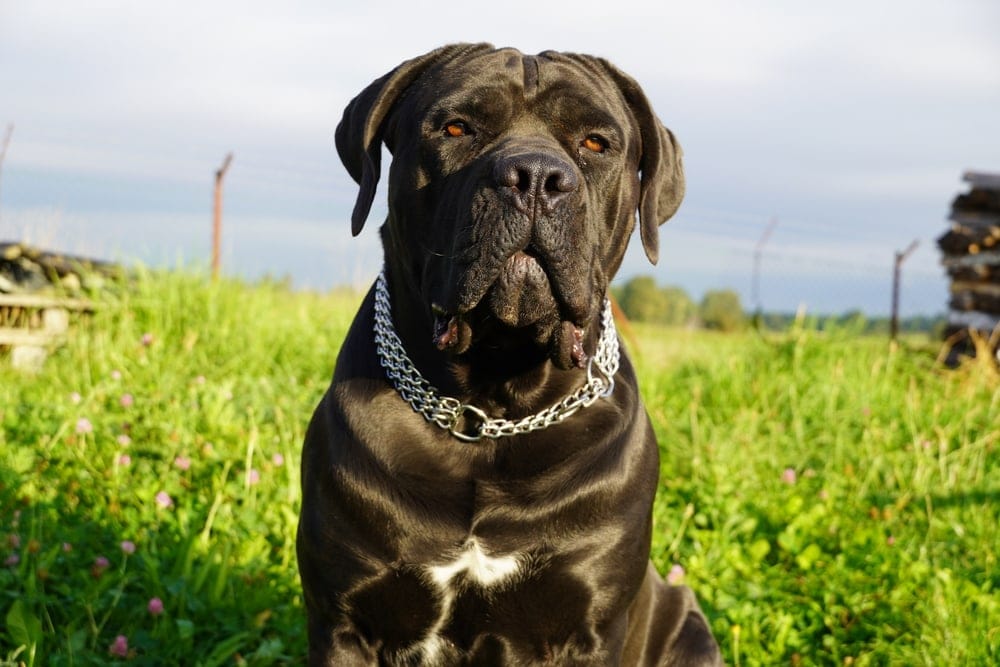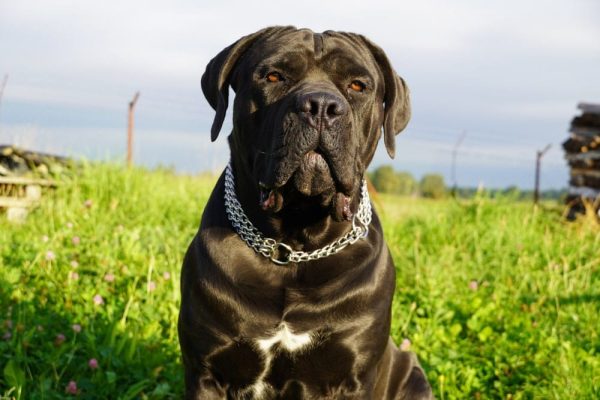The English Mastiff is a gorgeous dog breed that can weigh as much as 200 pounds. Although a giant breed, these dogs are loving, gentle, and wonderful companions, good with older children and other pets. The English Mastiff is also a loyal protector who won’t let strangers through your front gate without your reassurance and will only bark when necessary.
This breed should be trained and socialized from an early age to help them feel more comfortable around new people and pets. They’re not energetic dogs and are happy to spend their days snoring on the couch, but regular exercise is important for their health. There’s so much to say about these sweet dogs who are so much more than their giant size, so keep reading for some surprising English Mastiff facts!

The 12 Facts About English Mastiffs
1. They’re One of the Oldest Dog Breeds
A surprising fact about the Mastiff is that they’ve been around for thousands of years, with evidence of this breed’s ancestors roaming around the mountains of Asia in 2,500 BC.1 Of course, the Mastiffs from 2,500 years ago looked slightly different from the ones we have today with leaner and taller bodies, but they resemble the modern Mastiff closely. These dogs were even allegedly used for hunting lions, and evidence of this ancient breed has been found on various bas-reliefs dating back to this time.
The Phoenicians were skilled sailors who traveled through trade routes they established and traded with many different civilizations around 1,000 BC and 600 BC. It is believed that these great traders were responsible for bringing these dogs to Britain for the first time.
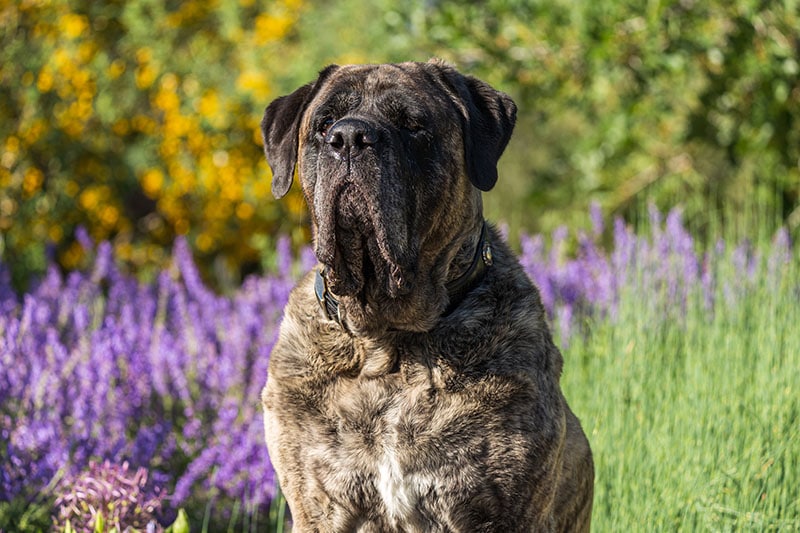
2. They Were Used for Fighting
English Mastiffs are intimidating dogs, but their loving personalities make it hard to believe that they’re capable of violence. Sadly, Mastiffs have been used for fighting throughout the centuries. First by the Romans, who took the ancient breed from Britain to Italy to fight in their own arenas, then by Kublai Khan, who owned 5,000 Mastiffs that he trained for war, and then by Queen Elizabeth I, who would watch the Mastiff fight wild animals for her own entertainment.
3. A Mastiff Made It onto the Mayflower
Only 102 passengers were on the Mayflower in 1620,2 and they brought only their essentials for the long journey. However, two of those essentials were passenger John Goodman’s Mastiff and Springer Spaniel. These dogs became useful to the pilgrims because they protected them from wild animals and helped them catch food through hunting.
John Goodman didn’t survive very long once he made it to Plymouth, Massachusetts, with both his dogs outliving him. Thankfully these dogs weren’t left to fend for themselves in this new country but were adopted by the community John was a part of.
4. They Almost Went Extinct
As we can see, English Mastiffs are massive dogs, and although they’re relatively easy to care for, they eat a lot. Their large appetites make them a costly breed to own, which is part of the reason for their near extinction. During the tough times that accompanied the wars in England, people were encouraged to put down their Mastiffs, as well as other breeds that needed a lot of food, in order to be able to feed the hungry human population.
After the Second World War, there were few Mastiffs left in England, but the breed was saved and rebuilt by importing Mastiffs from North America. Today, the Mastiff is a very popular dog breed that you will find across the globe.
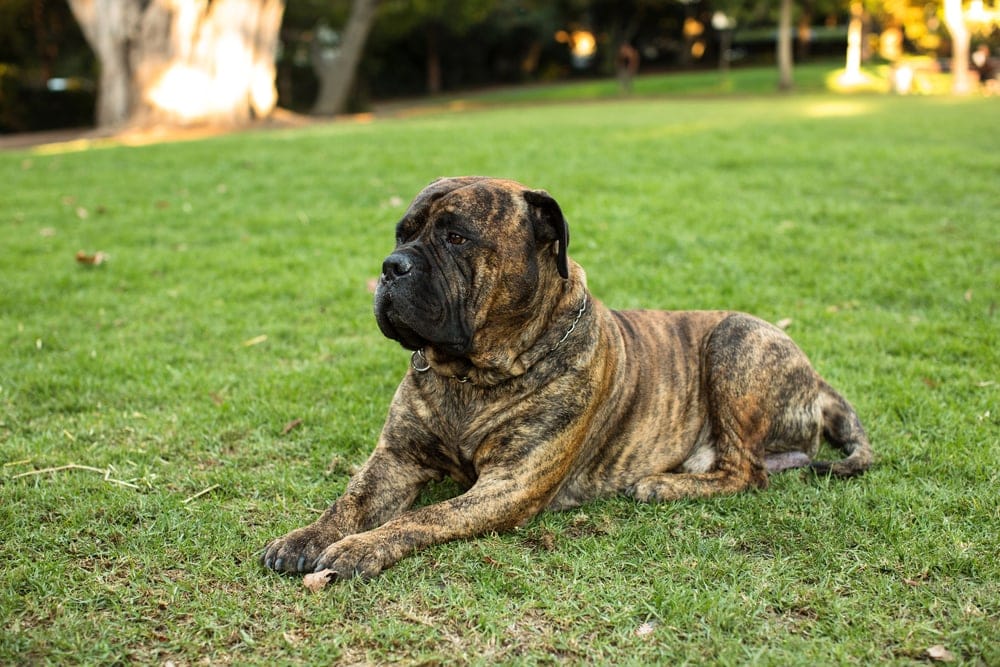
5. Aicama Zorba Holds the Record for “Longest Dog Ever”
Aicama Zorba of La-Susa, or “Zorba” for short,3 holds the Guinness World Record for “longest dog ever” and well as the heaviest. This Old English Mastiff was born in London in 1981, and at the age of 6, he had a length of 8 feet 3 inches, measuring from his nose to tail, and a shoulder height of 2 feet 10 inches. This big boy was also recognized for his incredible weight of 319 pounds.4
Hercules, another English Mastiff, was recognized as the largest living dog in 2001. He wasn’t as long or heavy as Zorba, but he was the heaviest dog at the time of the recording because Zorba had passed on.
6. They Reach Maturity at Age 3
English Mastiffs are sometimes referred to as “big babies” because they love to be cuddled and fussed over. However, they are, in fact, big babies. These giant dogs are only considered fully mentally and physically mature from the age of 3 years old. It takes a long time for dogs to grow as big as an English Mastiff, but it means that you get to have a puppy much longer than you would with most other breeds.
It’s important to use these developmental years to train and socialize your dog so that they don’t struggle with anxiety or aggression towards visitors or other pets. They are a sensitive breed, so be sure to only use positive reinforcement.
7. They Perform Well in a Variety of Jobs
Apart from commonly being used as guard dogs, English Mastiffs succeed at many other jobs too. Thanks to their intelligence and eagerness to learn, these dogs are used in activities such as pulling carts, obedience, and tracking. However, these dogs do lose interest quickly, so you’ll need to have short, consistent training sessions to see the best results.
English Mastiffs are also valuable in search and rescue missions and as therapy dogs. Their ability to track and their gentle patience make them ideal dogs for sensitive jobs. However, they’ve also been seen on screen in a handful of movies such as Marmaduke and Hotel for Dogs.

8. They’ve Had Famous Owners
English Mastiffs have been around for a long time, so it’s not surprising that they’ve encountered both highs and lows. Today, these dogs are well-loved around the world and are even pets to some of the biggest names across the fashion, music, sport, and film industries.
Some famous owners of English Mastiffs are Marlon Brando, Gayle King, George Campbell Scott, Larry Wolfe, Michael Bay, Michael Peter Balzary, Bob Dylan, Wayne Scott Lukas, Jon Bon Jovi, Christina Aguilera, Vin Diesel, and Dwayne Johnson.
9. They’re Excessive Droolers
All dogs drool sometimes. However, some breeds drool much more than others. Mastiffs, Bloodhounds, and Saint Bernards are among the breeds that are known for their excessive drooling. These dogs drool more than others because they have a lot of extra skin around their jowls, which collects saliva and drips.
If you love English Mastiffs, drool is going to be a big part of your life, and you may find saliva smeared over your clothing on a daily basis, so prepare for those moments by keeping a drool rag on hand. Thankfully, excessive drool in an English Mastiff isn’t something to be worried about.
10. They’re Easy to Groom
Although a giant breed, English Mastiffs aren’t difficult to groom and maintain, thanks to their short coat. They don’t need to be brushed daily but will benefit from a quick brushing a few times a week. These dogs will shed a bit more during spring and fall, which is when you might want to step up their brushing sessions until the seasons are over, and you start to notice less hair around the house.
As with all dogs, you will need to stay on top of brushing their teeth and trimming their nails. You’ll also need to clean around their face often, making sure to get between their wrinkles.
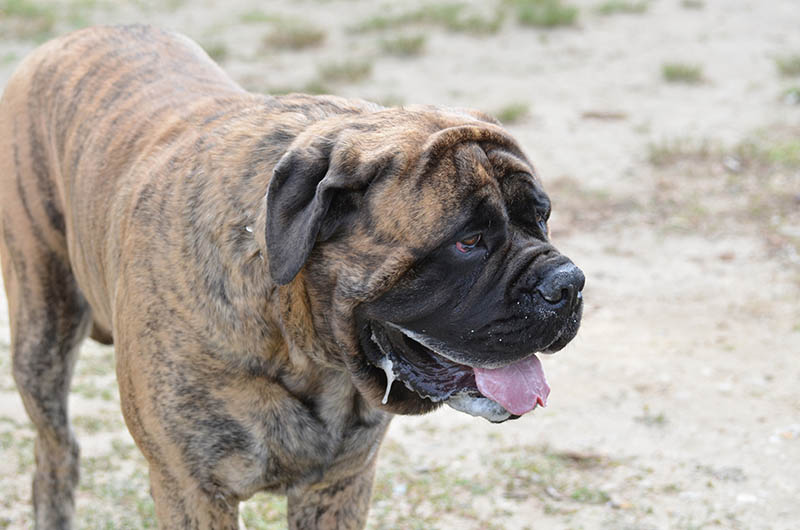
11. They Communicate a lot with Their Eyes
English Mastiffs don’t bark for attention or to get their needs met, but they are excellent at communicating with their eyes. Mastiffs can often tell you how they’re feeling emotionally through their eyes, you just need to notice.
These dogs are very sensitive and are able to pick up on your emotional state through your tone, expressions, and body language, so be careful of how you behave around your dog, as their feelings can be easily hurt in a moment of frustration.
12. They Have a Lifespan of 6–10 Years
English Mastiffs are a breed with a lifespan of around 6–10 years, which is much shorter than many smaller dog breeds. Unfortunately, giant dog breeds don’t tend to live very long, and the English Mastiff is prone to quite a few health issues, such as allergies, eye problems, cancer, hip dysplasia, obesity, degenerative myelopathy, epilepsy, and bloat.
It’s necessary to be aware of the conditions this breed is prone to if you’re interested in getting an English Mastiff, as you’ll need to stay on top of their vet checkups and look into pet insurance to help with the vet bills that may arise.
Conclusion
There is so much to learn about the English Mastiff, so whether you read through these facts to get to know your dog better or out of curiosity, we hope you learned something new that encourages you to appreciate this giant breed even more. With the many centuries that this breed has been around and all the highs and lows they’ve encountered, they certainly deserve an abundance of love and care, just like every other dog.
See Also:
- Brindle Mastiff: Facts, History & Origin (With Pictures)
- Bullmastiff vs. English Mastiff: Differences Explained
Featured Image Credit: Urszula Drab, Shutterstock
Contents
- The 12 Facts About English Mastiffs
- 1. They’re One of the Oldest Dog Breeds
- 2. They Were Used for Fighting
- 3. A Mastiff Made It onto the Mayflower
- 4. They Almost Went Extinct
- 5. Aicama Zorba Holds the Record for “Longest Dog Ever”
- 6. They Reach Maturity at Age 3
- 7. They Perform Well in a Variety of Jobs
- 8. They’ve Had Famous Owners
- 9. They’re Excessive Droolers
- 10. They’re Easy to Groom
- 11. They Communicate a lot with Their Eyes
- 12. They Have a Lifespan of 6–10 Years
- Conclusion

